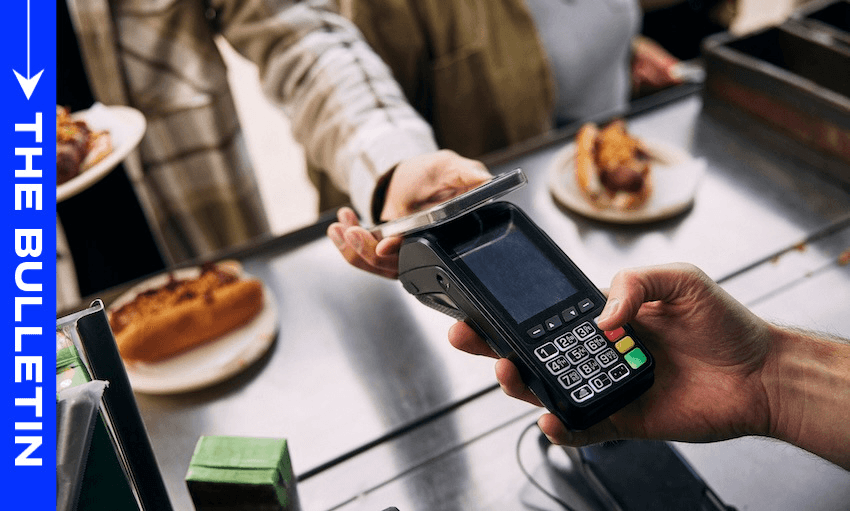The move to scrap in-store surcharges is good news for consumers but has many retailers and card issuers crying foul, writes Catherine McGregor in today’s extract from The Bulletin.
To receive The Bulletin in full each weekday, sign up here.
End of the surcharge sticker era beckons
The dog-eared masking tape stuck to payment terminals across New Zealand may soon be consigned to history. In a move the government says will save consumers up to $150 million a year, most surcharges on in-store card and device payments will be banned by May 2026. The new law will apply to Eftpos, Visa and Mastercard transactions – including contactless – but not to payments made online, or using commercial or foreign-issued cards. The move follows widespread criticism of retailers charging excessive surcharges of up to 2.5%, with some outlier merchants charging 5% or more.
The ban will bring New Zealand closer to other jurisdictions like the UK and EU, where surcharges are already prohibited. Australia currently allows them but caps fees at cost – a model its central bank is now moving to tighten further.
How surcharges work
So why were surcharges ever allowed in the first place? As Stuff’s Lloyd Burr explained in a two-part investigation last year, it’s mostly because credit card providers like Visa and Mastercard charge banks to use their networks, and those banks in turn pass the cost to retailers through merchant service fees. Rather than build these into prices, some retailers tack on a visible surcharge – especially for contactless payments, which are processed through the same infrastructure as credit cards.
The actual cost to retailers varies widely depending on size and turnover, with credit and contactless payment processing averaging 2.3% but sometimes climbing as high as 3.5% for small businesses. In contrast, Eftpos and debit transactions are cheaper to process, but even these have been hit with surcharges – illegally, in some cases. “The whole system of payments is incredibly complex, confusing, commercially sensitive, and many are clipping the ticket along the way,” wrote Burr. “The complexity is good for those involved because the fewer people who understand it, the fewer people can stand up against it.”
Retailers squeezed, but fee cuts offer relief
The new surcharge ban builds on the Commerce Commission’s recent decision to cap interchange fees – the largest component of merchant service charges – which the commission estimates will save businesses $90 million annually. That reform effectively cleared the path for a surcharge ban by lessening the financial blow to merchants.
Still, retailers are warning of knock-on effects. Hospitality NZ’s Steve Armitage said many in the sector may be forced to raise prices to cover the loss of surcharge revenue, while Dairy and Business Owners Group chair Ankit Bansal called for reforms to ensure small businesses get the same transaction fee deals as corporate giants. Speaking to BusinessDesk’s Pattrick Smellie (paywalled), Mastercard’s Richard Wormald said the interchange fee cap could backfire, with banks forced to claw back revenue by delaying payments to retailers or cutting their (already meagre) reward scheme perks.
Winners and losers in the post-surcharge world
As traditional players push back, some fintechs see the reforms as a mixed blessing. Jamie Jermain of new local player Emerge said the squeeze on interchange fees could choke innovation by making card payments “so cheap that there’s no incentive for someone to build a domestic solution” offering a better customer experience. Mastercard’s Wormald went one further, warning the interchange fee cap “will clearly kill all the open banking and other payment opportunities in New Zealand”.
Yet BNZ seems to be looking on the bright side. It used yesterday’s news to promote its new open banking platform Payap, which facilitates direct account-to-account payments using QR codes and has a much lower transaction fee of just 0.39% in some cases. With Payap set to launch to consumers next month, and open banking initiatives gaining momentum, the future of payments may lie beyond cards altogether. But for now, the government’s move marks a win for transparency at the till – and for anyone who’s ever grumbled at paying extra just to tap their card.
Subscribe to NameEmailSubscribe

